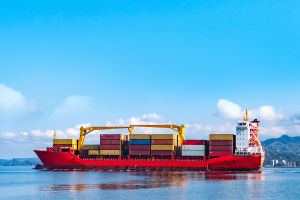Sailing speed has always been a topic of fascination, considering the surprising velocity at which sailboats can glide across the water despite their graceful appearance.
While some attribute sailing prowess to understanding wind direction, the ability of sailboats to travel several times faster than the wind and even against it is indeed a marvel. Let's delve into the secret behind this phenomenon.
Sailboats represent one of the oldest and most prevalent forms of watercraft in human history. They harness the power of wind by adjusting the angle and size of the sails to control both speed and direction. Despite relying on wind power, sailboats often outpace the speed of the wind.
So, what propels a sailboat forward? The answer lies in the Bernoulli principle.
Let's start with a brief introduction to Daniel Bernoulli, the Swiss physicist, mathematician, and physician. In 1726, Bernoulli discovered the "boundary layer surface effect" through extensive experiments: as the velocity of a fluid increases, the pressure on the interface between the object and the fluid decreases, and vice versa.
This discovery, commemorated as the "Bernoulli principle," applies to all ideal fluids, including liquids and gases, and is one of the fundamental phenomena of fluid dynamics when dealing with stable flow. It reflects the relationship between fluid pressure and velocity: as fluid velocity increases, pressure decreases, and vice versa.
The Bernoulli principle is ubiquitous in our daily lives. For example, if we blow air between two sheets of paper, we notice that the papers are pushed together instead of apart. This is because the air between the papers accelerates, reducing pressure, while the air outside remains still, resulting in higher pressure, pushing the papers together – a simple demonstration of the Bernoulli effect.
Another example is observed when waiting on a platform before boarding a train, high-speed rail, or subway. The yellow line exists precisely because the approaching vehicles generate a Bernoulli effect, attracting individuals toward the direction of the vehicle. This can be hazardous, hence the importance of staying behind the line for personal safety.
Now, let's explore the principle behind sailboat propulsion.
As mentioned earlier, when sailing downwind, sailboats utilize dynamic pressure as the driving force. However, as the boat's speed increases, the speed difference between the boat and the wind gradually diminishes, reducing the driving force.
Eventually, when the boat's acceleration reaches zero, balanced with the resistance of the water, the boat enters a steady-state motion where its speed approaches but cannot exceed the wind speed. Traditional square-rigged sailboats operate in this manner, limiting their speed to that of the wind.
To further enhance sailing speed and efficiency, a more potent force beyond direct thrust is required – static pressure, achieved through upwind sailing and leveraging the Bernoulli effect.
Sail sails resemble the shape of an airfoil. Let's assume the concave side of the sail, filled with air, is the windward side, while the convex side, protruding outward, is the leeward side. As air flows past the sail, the windward side experiences faster airflow convergence than the leeward side, leading to increased flow velocity. The higher pressure on the slower side compared to the faster side generates static pressure on the sail.
While not all static pressure is utilized to propel the sailboat forward, the component acting along the direction of the boat's bow – let's call it lift – is the primary driving force, with another lateral component known as lateral force.
It's important to note that motion is relative. When sailing, the perceived wind speed and direction by the crew significantly differ from the true wind due to the boat's speed. The natural wind, relative to the land or water surface, is termed "true wind," while the wind perceived by the crew during motion is referred to as "apparent wind" or "sensed wind." The magnitude and direction of the apparent wind result from the vector addition of the true wind and the boat's speed.
As the boat navigates in various directions, the magnitude and direction of the apparent wind vary accordingly. While sailing within the range from a beam reach to close-hauled, the apparent wind always exceeds both the boat's speed and the true wind's. By sailing at a certain angle relative to the wind direction, and with the aid of static pressure, sailboats can maintain a consistent and stable propulsion, enabling them to achieve relatively high sailing speeds.


